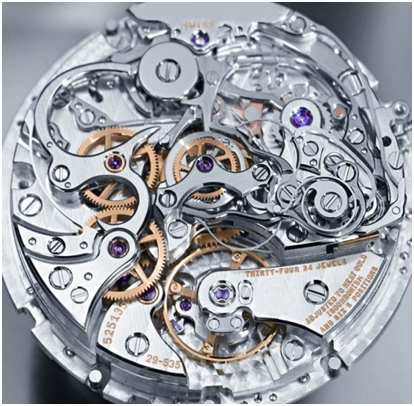Occlusion, AKA Bite

One dental problem that is frequently overlooked is occlusion, or what we usually call a bite. And I cannot stress out more how important bite is. Bite is the relationship between upper and lower teeth as they come into full contact such as during biting, chewing, or just bringing them together. Usually, when patients are asked about their dental problems, they only think about teeth. In reality, the mouth is a highly fine-tuned system, consisting of joints, muscles, and teeth that are supposed to work harmoniously, like a swiss watch.
All wheels are perfectly lined up, properly positioned, and secured by screws within the watch frame. If something happens to a frame, screw, or gear it will manifest in wear, tear, and ultimately bad performance.
The same concept applies to the mouth. When we examine it, we are looking for any signs of instability. Wear and tear in the mouth is:
- Excessive tooth wear
- Tooth sensitivity
- Chipped or broken teeth
- Drifting teeth
- Bone loss and gum recession
- TMJ noise, clicking
- TMJ discomfort and/or pain
- Headaches
- Head and neck muscle pain
Such discoveries indicate that something is off within the system and it will stay unstable and unpredictable. And so, most probably, your future will include some or all of the above mentioned symptoms.
The same concept applies to restorations that a dentist delivers. For patients with a bite discrepancy, it is important to stabilize the jaw and bite before starting any definitive treatment on the teeth (fillings or crowns). The reason for this approach is simple. We have to adjust any restoration we deliver to the existing bite.
Doesn’t matter how good a dentist is, how well a tooth is prepared, how well a filling is put in, or how great the lab that fabricates a perfect crown is.

Here is a perfect example. Let’s say you need to change a window in this house. You go and buy the best window that exists on the market. The only problem is that window is straight, normal. In order to fit it in you will need to bend the window’s frame. Doing so compromises proper function, installation, and you can’t expect this window to last. Now imagine you need to change not one but 3, 5 windows. Another option would be to correct the house to proper standards and then any repair would be an easy task. A second option is more prudent, sensible, and long-lasting, in my view.
Generally, teeth are divided into two categories, front or anterior teeth, and back or posterior teeth. Posterior teeth are designed for chewing, anterior for protection. The relationship of upper and lower anterior 6 teeth is very important, especially between canines and central. In dentistry, the proper relationship between teeth is called Class I. Any misalignment or wear of these teeth most likely will create what is called occlusal interference – essentially teeth rubbing against each other during functioning which leads to tooth structure wearing down, muscle imbalance, teeth chipping off, shifting. The position and shape of canines are responsible for this function to work. So any change to the position of the canines or their shape will lead to compromised function or no function at all.
Canine Guidance

In people with ideal teeth relationships, the upper and lower teeth contact evenly throughout the entire dental arch when the teeth are fully together in that person’s centric occlusion. However, as soon as a person begins any side movement of a lower jaw, all the teeth, front and back alike will lose contact, except for the upper and lower canines on that side. In other words, the canines are positioned and inclined in such a way that, while they allow full contact of all teeth when teeth are fully closed, they force the jaw to open as the upper and lower canines slide over each other. This setup eliminates any possibility of any kind of rubbing between teeth as the person begins to grind from side to side.
In fact, canine guidance is considered the most physiologic of all occlusal relationships because it protects the teeth from wear and tends to prevent bruxing in most persons who are likely to brux only occasionally. In the absence of chronic bruxing habits, this relationship often persists throughout life.
Group Function
Sometimes, if a person has a habit of grinding or clenching, nail biting, or any other habits that produce abnormal tooth wear, over a period of years the tip of the canine will wear down. This causes more and more back teeth to engage in contact during functional movements. This will lead to condition when all the back teeth will remain in rubbing motion throughout the entire side movement – chewing. This type of bite called a “group function”. In group function teeth will wear much faster and this condition stimulate the bruxing habit leading to greater and greater wear on all teeth. Eventually, teeth become flat, eliminating any tendency of the lower jaw to drop at all during lateral excursions. In other words, all, or most of the teeth remain in contact throughout the entire lateral excursion, and fail to disclude, as they do in canine guided occlusions. This may cause extreme wearing of the anterior teeth as well as the posteriors.
Attrition
Continual bruxing leading to continual wear of the teeth also changes the relationship of the patient’s centric occlusion to their centric relation, causing a slow, continuing protrusion of the lower jaw bringing about more and more wear on the anterior teeth. Many dentists believe that by recreating a canine-guided relationship they can stop a severe bruxing habit and save dentition otherwise doomed to “death by attrition”.